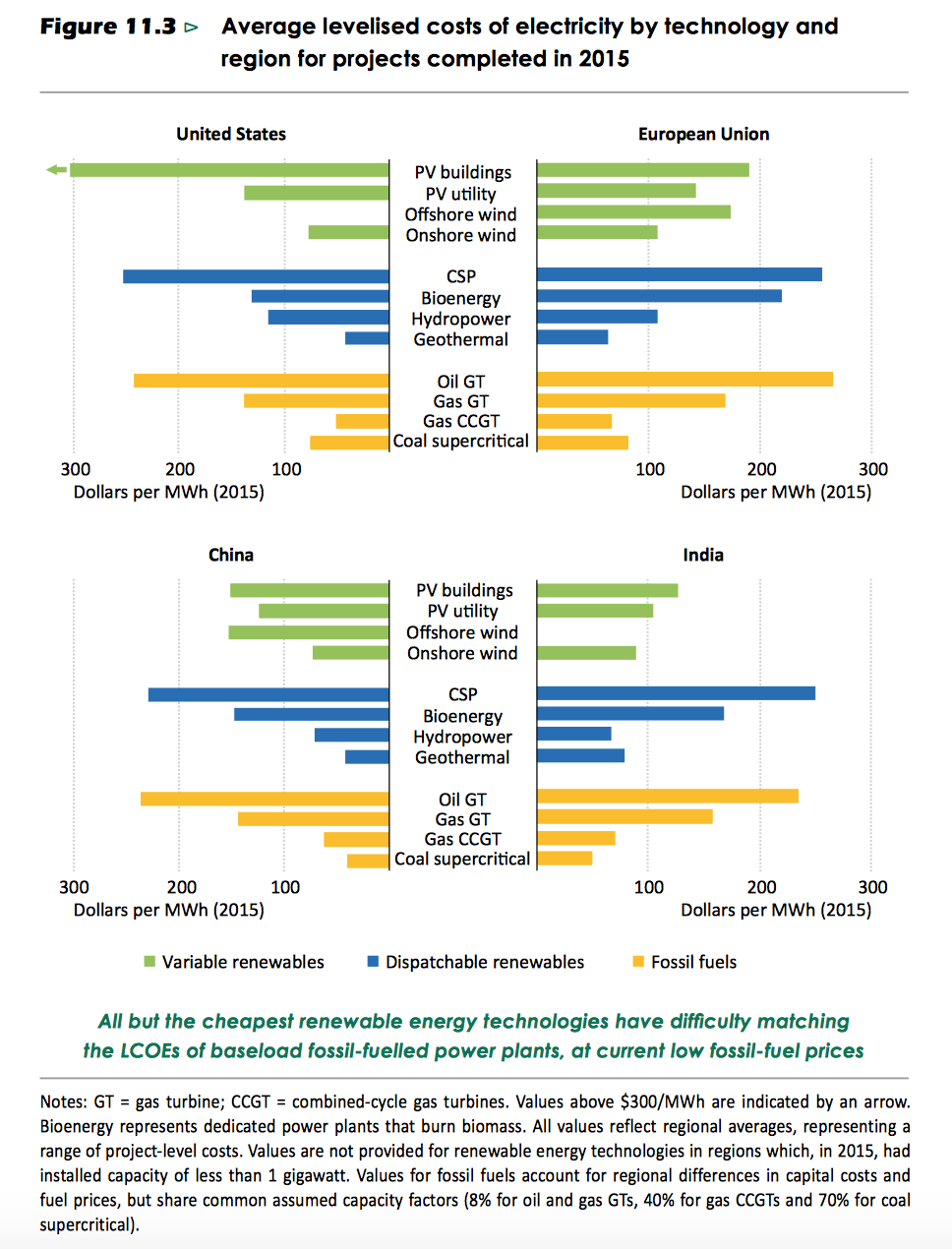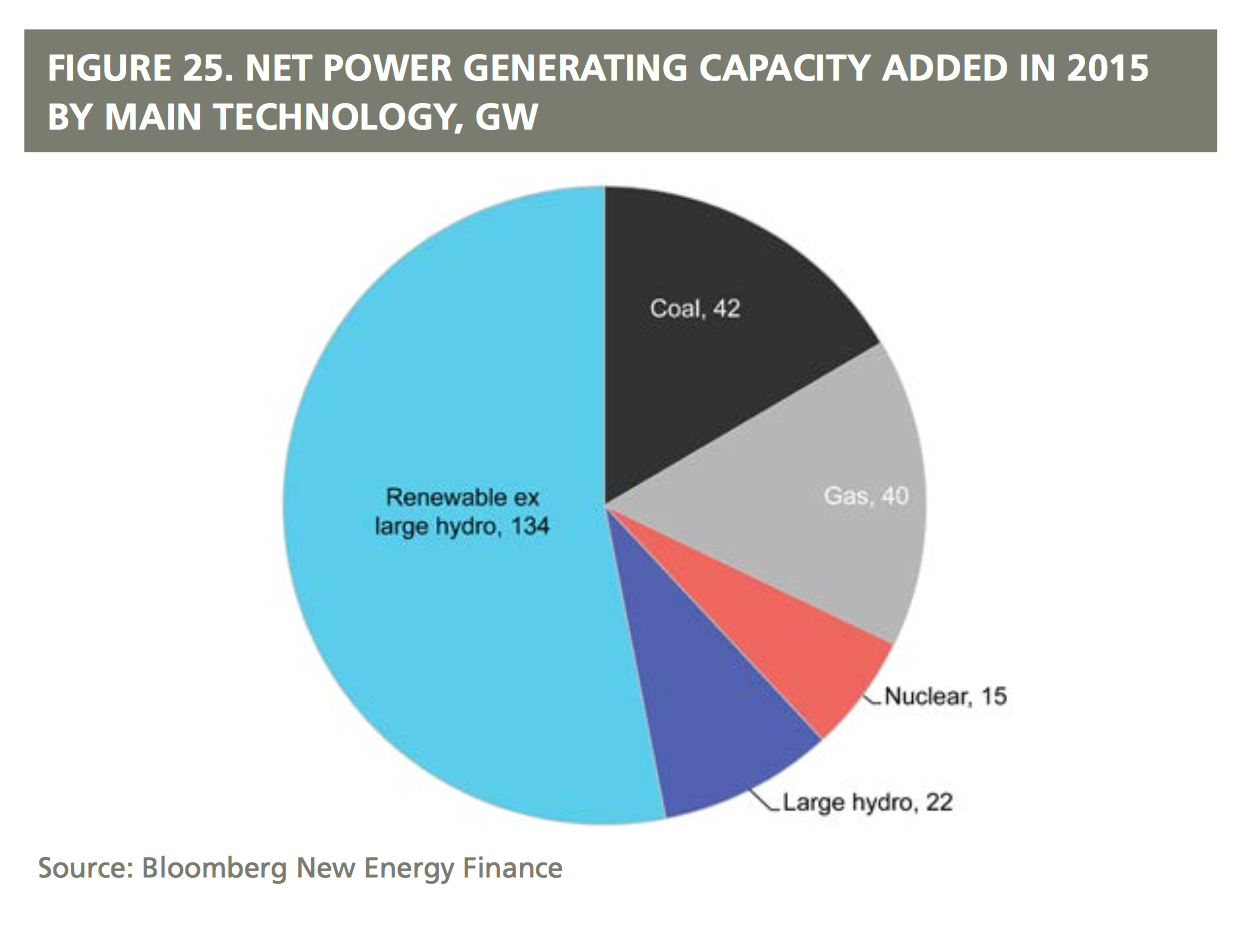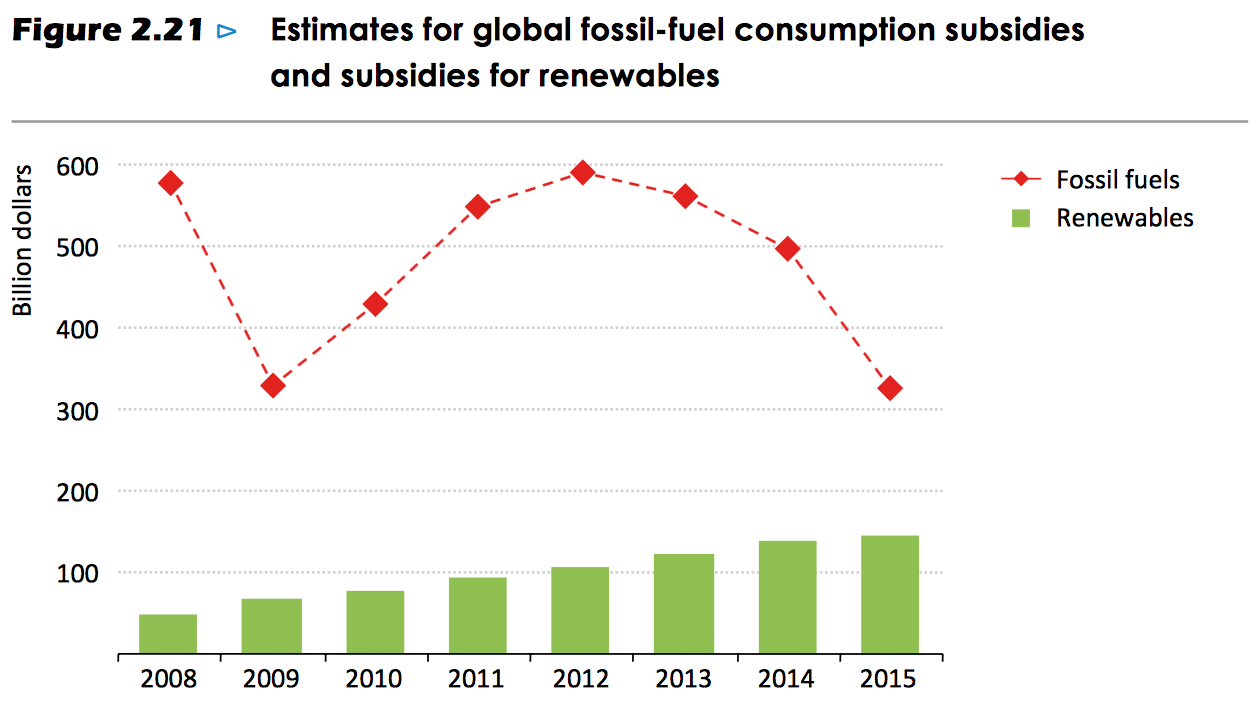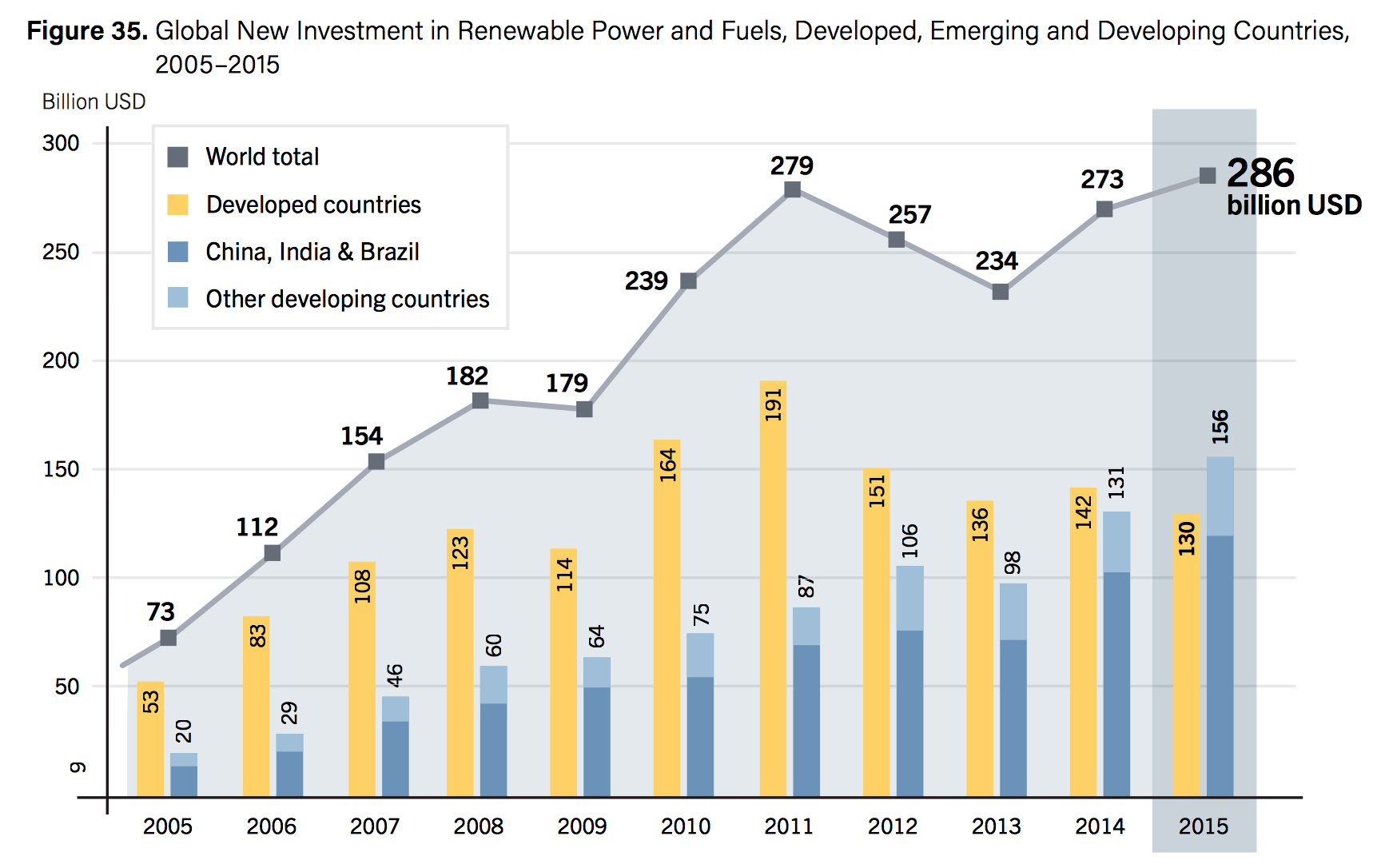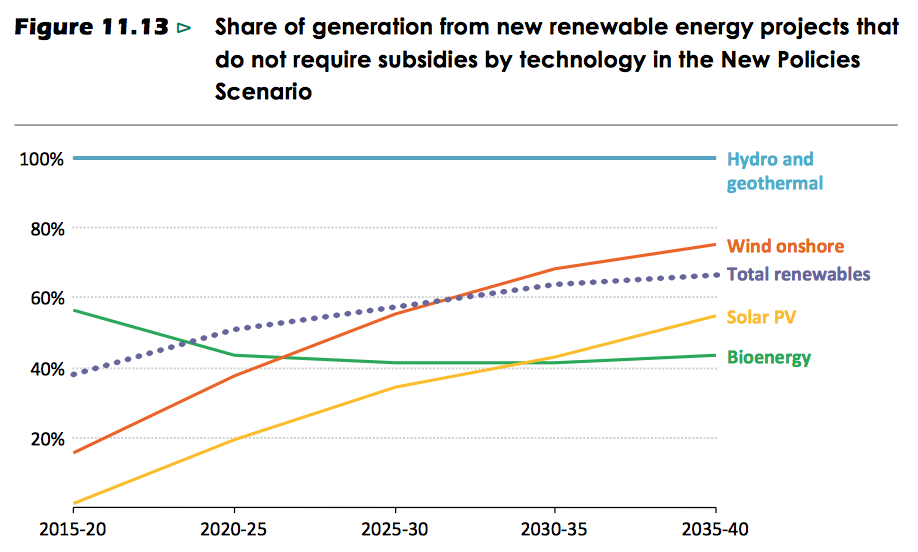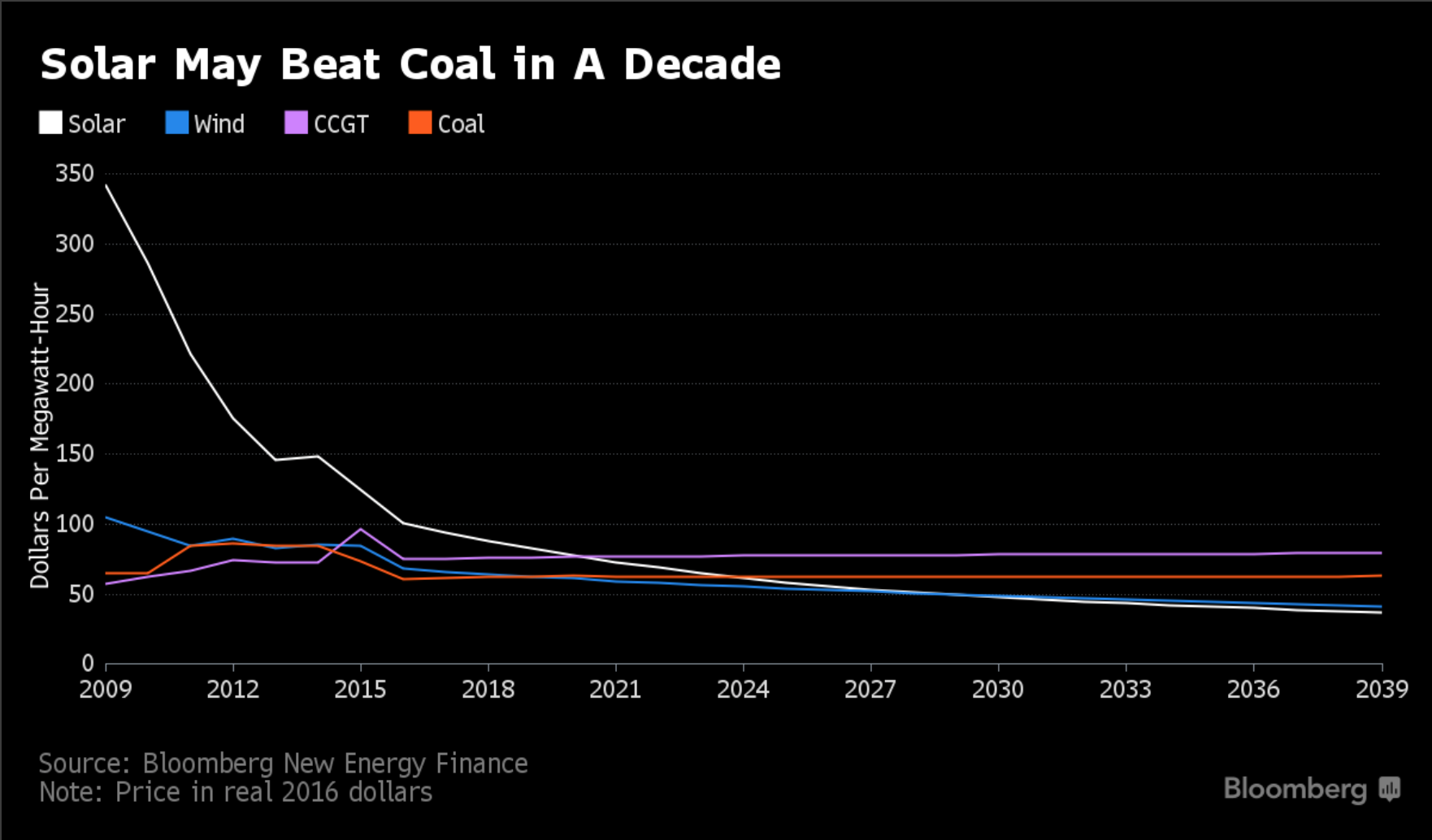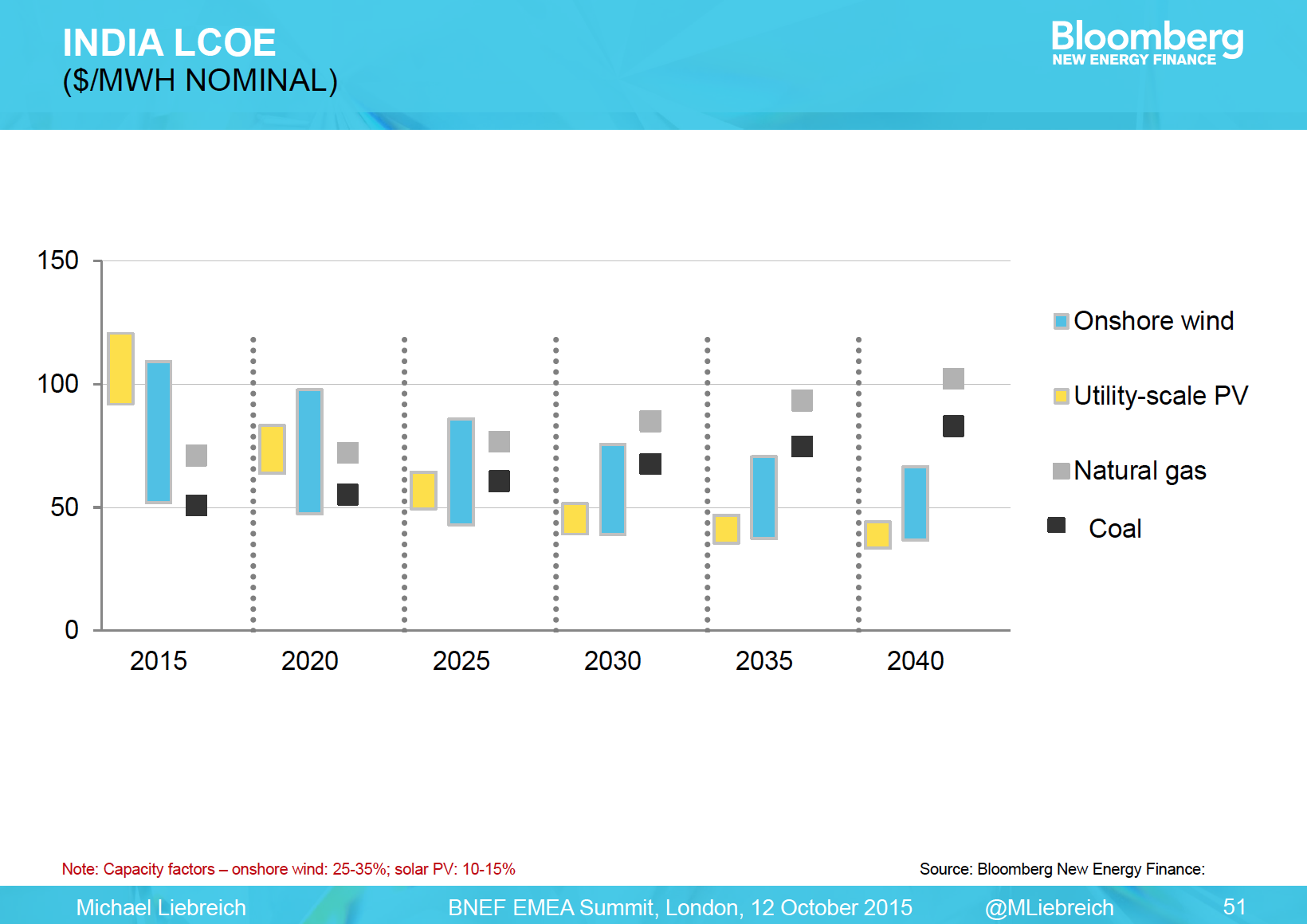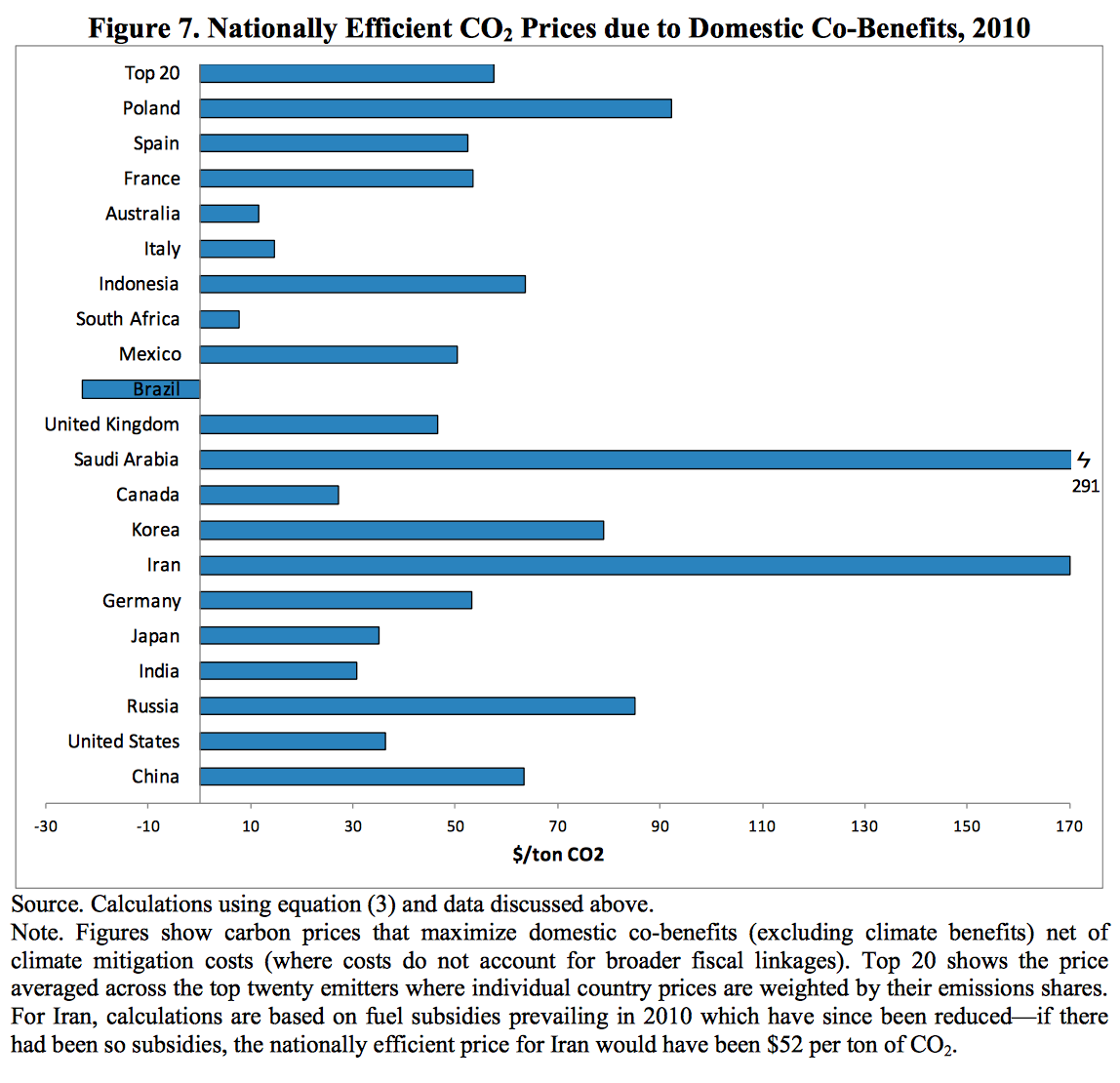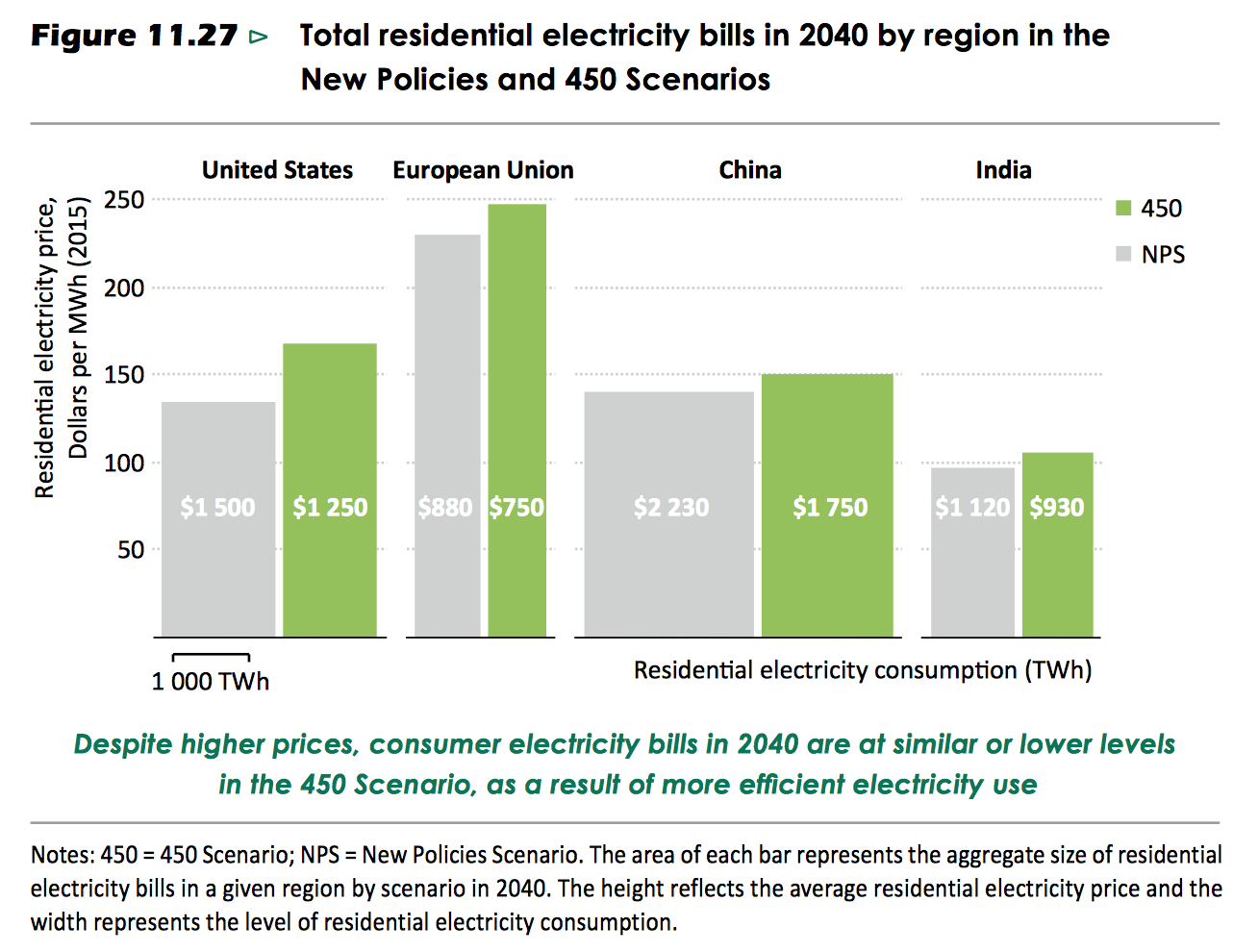On April 11, I was invited by the Electricity Consumers Research Council (ELCON) to debate carbon taxation with the Manhattan Institute’s Oren Cass at their Spring workshop in Washington, D.C. Although the debate was not recorded, it is worth discussing. Cass is one of the most prominent and serious “anti-carbon-taxers” on in the right. His opinions, moreover, track those of Bill Gates, one of the most influential thought leaders in this field.
Our debate was a confrontation along increasingly familiar lines: Does the world need a clean energy moonshot to address climate change, or do we have the cost effective technology to do so right now? My opening remarks follow, after which I will spend a bit of time reflecting on Cass’s rebuttal.
Opening Remarks: The Dangers We Face, the Question of Uncertainty, and the Case for a Carbon Tax
Too many conversations about carbon taxation are bereft of any serious discussion about the underlying problem that we’re trying to address. So let’s begin with a quick review of our present situation, which is far more serious than Cass’s recent essay in Foreign Affairs (“The Problem with Climate Catastrophizing: The Case for Calm“) would have us believe.
According to a new study from MIT, the planet is presently on track to experience a warming of 3-5 degrees Celsius above preindustrial levels by 2100. The range reflects our uncertainty about how quickly the planet will respond to anthropogenic greenhouse gas emissions (a concept known in the profession as “transient climate sensitivity”). MIT’s central estimate, however, is that a 4 degrees Celsius warming is the most likely outcome in 2100.
Happily, Cass—unlike most opponents of climate action—accepts the findings of mainstream science and, in his Foreign Affairs essay, accepts the 4C warming projection for 2100. Turning up the global thermostat by 4 degrees Celsius (7 degrees Fahrenheit) is a very big deal. To put that warming into perspective:
- Global temperatures during the last ice age were only 4C cooler than pre-industrial norms.
- Increasing the global thermostat by 6 degrees Celsius above pre-industrial levels has in the past delivered unto earth its most epic hothouses (think “Age of the Dinosaurs”).
- The last time the atmosphere had today’s high concentrations of greenhouse gases was during the late Pliocene Epoch, some 3 million years ago. Temperatures then were only 2°C to 3.6°C above pre-industrial levels. Under those conditions, there was no Arctic ice cap and sea levels were 30-65 feet higher.
- 4 degrees Celsius is not the endpoint of our warming under business-as-usual. It is simply a way-point. If we manage to stabilize atmospheric CO2 from then on, inertial warming of the climate will continue beyond 2100. It isn’t until anthropogenic emissions hit zero that we will begin to plausibly reverse course on global temperature. The MIT report indicates that global emissions in 2100 will still be larger than they are today.
- We have little idea how, precisely, the planet will respond to such an unprecedentedly rapid increase in atmospheric greenhouse gases. There are literally no data points either in human or pre-human experience to inform our analysis. Nassim Taleb’s parade of black swans is marching down the street. A long list of socio-economic shocks is plausibly on the horizon.
Given the uncertainty regarding transient climate sensitivity, where the various tipping points lie for warming-related climate shocks, what the economy will look like decades hence, and how that economy will respond, we cannot say with confidence what warming will cost us by the year 2100. Here are the best (if imperfect) guesses:
- William Nordhaus’s updated DICE model finds that 4C warming will reduce global GDP by 3.6%. The majority of economists who publish in the peer-reviewed literature on this matter, however, suspect that his forecast is too conservative. They believe that 3C warming will reduce global GDP by 5-10%.
- If it turns out that warming affects output growth rates rather than output levels, the cost of warming will increase by many orders of magnitude (for more on this, see economists Robert Pindyck and Geoffrey Heal and Jisung Park). A recent deluge of econometric analyses of temperatures and growth rates shows this could very well be the case. Incidentally, 78% of the economists who publish in the peer-reviewed literature in this field believe that climate damages will affect growth rates.
- When those same economists were asked about the chances of low-probability, high-impact outcomes from climate change reducing global GDP by 25% or more (economic losses, in other words, on the order of the Great Depression), they put the odds of that happening at 10-20% given a 3C warming.
Cass has asked me to be concrete about the carbon tax I’m advocating. My preference is for an economy-wide $45 per ton carbon tax, rising 2% above inflation every year.
- The tax would be applied or rebated at the border (as necessary) so that U.S. manufacturers are not rendered uncompetitive with imports from non-acting states or exports to the same.
- Federal regulatory authority to address greenhouse gas emissions would be eliminated in sub-sectors of the economy where the tax is applied.
- I am agnostic about how the federal government uses carbon tax revenues (about $2 trillion over ten years) for the purpose of this discussion. The immediate need is to reduce emissions to hedge against climate risks. How revenues from that undertaking are spent is an entirely separate (fiscal) matter. Among possibly attractive uses are offsets for corporate income tax rate cuts, providing lump-sum rebates to households to compensate them for rising energy prices, paying down the national debt, offsetting expenditures for national infrastructure, investing in low-carbon energy R&D, and investments in climate adaptation (better that polluters rather than victims of pollution pay that bill).
The tax I propose would reduce U.S. emissions by around 40% relative to business-as-usual by the mid-to-late 2020s. That would put us on a path to reduce U.S. emissions by 50-80% by 2050 (relative to 2005)—the goal that would allow us to play our part in keeping global warming from going above 2C.
The cost of such a carbon tax (likely less than 0.8% of GDP) is well south of the expected costs of warming by 2100 (as mentioned earlier, a conservative 3.6% or more of GDP). In concrete terms, a $45 per ton carbon tax would simply mean:
- Gasoline prices return to where they were last summer.
- Crude oil prices return to 2009-10 levels.
- Electricity prices increase 3c per kWh, about the same as moving from New Jersey to Massachusetts.
Why tax rather than regulate greenhouse gas emissions? The most straightforward reason is that leaving it to market actors to decide where, when, and how to reduce emissions will likely prove faster and more efficient than leaving those decisions to government regulators. We can skip an ideologically driven, inconclusive debate in Washington about whether “conservative clean energy” (nuclear fission, hydropower, and fracked gas) is a better set technologies than wind and solar and to what extent they facilitate the necessary pace of decarbonization; whether carbon capture and storage can ever prove economic; whether 4th generation nuclear power technologies are on the economic horizon; how best to reduce emissions from the transportation sector; how cost-effective is energy efficiency going forward; how realistic is an “all-renewables” energy system; or any of a whole host of similar debates that occupy the time and attention of policy wonks. Market actors are far more likely to find the right answers to those questions through experimentation, tested by profit and loss, than are politicians and/or regulators informed by energy technocrats.
While I don’t mean to rely too much upon appeals to authority, the issues are complicated and require complex methods of analysis. So it is worth noting that most economists who labor in this field—whether left, center, or right—agree with the arguments I’ve just laid out:
- 50% believe that “immediate and drastic action is required,” while 43% believe “some action should be taken now.”
- 75% believe that the best policy response is via “market-based mechanisms coordinated at a regional or national level, such as a regional/ national trading program or carbon tax.”
What is too often overlooked by the right—and what I overlooked for so long when I was on Cass’s side of this debate—is that climate change requires us to engage in a risk-management exercise no different from many others we regularly confront in financial markets. There is a wide distribution of possible outcomes from warming. We have only a very rough estimate of what the range of the distribution might be, what the probability is that any one of the many possible outcomes might come to pass, and when those outcomes might arrive in full force. These uncertainties, however, do not mean that the (non-diversifiable) risks are any less real. We need to put a price on these risks. If we can hedge against potentially catastrophic climate risks in a cost-effective manner, we should. And happily, a carbon tax allows us to do just that.
Cass’s Rebuttal: The International Collective-Action Problem
Cass offered a host of disagreements regarding the relative risks posed by warming, the merits of considering the full distribution of possible outcomes from climate change, the political economy of carbon taxation, and a few other matters that I will tackle in depth another time. Even so, Cass expressed general agreement with the case for a global carbon tax, but not a unilateral national carbon tax.
Unilateral U.S. carbon taxes, Cass argued, would produce no meaningful climate benefits. Temperatures would simply not go down very much in response to unilateral U.S. emissions cuts given the quantity of emissions from other nations in the world.
Global action passes Cass’s cost-benefit test. Even so, Cass maintained that developing nations such as India, which will be producing the bulk of global greenhouse gas emissions in the future, have no incentive to abandon fossil fuels and thereby reduce domestic emissions. Doing so would severely harm their prospects for economic growth. As long as that is the case, he said, joint global action is impossible.
Hence, his preferred policy: major public investments in low-carbon energy R&D to produce the affordable technology that might encourage developing nations to shift away from fossil fuels. In this sense, Cass’s policy path is not that different from Bill Gates’s, who wrote in 2014 that ”instead of putting constraints on poor countries that will hold back their ability to fight poverty, we should be investing dramatically more money in R&D to make fossil fuels cleaner and make clean energy cheaper than any fossil fuel.”
Even though low-carbon energy production costs have dropped rapidly (the global average capital cost for PV solar, for instance, has fallen by almost 60% in the past five years), it is true that fossil fuels are, on average, less expensive than low-carbon energy. This can be readily seen in the International Energy Agency’s World Energy Outlook, 2016.
While most of the terminology in this figure should be familiar, CSP means “Concentrated Solar Thermal Power.” “Coal Supercritical” refers to modern coal-fired power designs in which the water running through the plant works as a supercritical fluid, meaning it is neither a liquid nor a gas.
For Cass, the analysis stops right here. To paraphrase the standard argument (one that I marshaled frequently when I was a climate skeptic):
Fossil fuels are cheaper and more easily dispatched when needed than renewables. Embracing the latter rather than the former retards economic growth and would cripple industrial economies. We might voluntarily do that because we’re rich and are susceptible to bouts of environmental hysteria. Poor countries around the world don’t have that luxury and aren’t about to voluntarily consign their people to continuing poverty for trendy rich-man causes like global warming that, even if it plays out as the IPCC fears, won’t matter much for generations hence. Developing countries have more immediate problems to attend to. Hence, there’s little we can do save continuing to create wealth to better afford adaptation strategies and to offset the losses that might follow from climate change. Beyond that, we can reasonably hope that market actors will find better low-carbon energy technologies in the future (necessity, after all, is the mother of invention).
The Key Question: Is the Developing World Really an Obstacle to Global Climate Action?
Cass’s position seems reasonable at first glance, but it does not reflect realities on the ground.
Here is the riddle: Despite the cost advantages held by fossil fuels on average, far more money is being invested globally to build low-carbon energy production facilities than to build new fossil-fuel production facilities. If high-cost renewables are a major obstacle to mitigation around the world, how do we explain this?
Global renewable energy capacity has almost doubled in one decade, from 1,037 gigawatts of capacity in 2006 to nearly 1,985 GW at the end of 2015. Wind energy grew nearly sixfold, from 74 to 432 GW over that period, while solar capacity rocketed from 6 to 227 GW. Hydropower also saw a 35 percent expansion, from 893 GW in 2006 to 1,209 GW last year. Renewables now account for about 30 percent of the total installed power-generating capacity and 23 percent of total global electricity production.
Conservatives might say that government subsidies (production mandates, feed-in tariffs, favorable financing, etc.) can explain this. Granted, subsidies do explain some of it. The IEA’s World Energy Outlook 2016 reports that, as of last year, 155 countries have governmental policies to encourage the use of low-carbon energy, with subsidies totaling $120 billion in 2015. Cumulative subsidies to renewables-based electricity generation worldwide, given present policy paths, are expected to total $4.7 trillion over 2016-2040 (equivalent to about 0.2% of the cumulative global GDP over the period).
On the other hand, the IEA reports that cumulative global subsidies to fossil fuels totaled $325 billion in 2015 (a figure that does not include the implicit subsidies associated with uninternalized environmental costs). So while the relative impact of subsidies obviously varies by country, by industrial sector, and by region, the global renewable energy market share cannot, on balance, be explained entirely by government subsidies.
What really undercuts Cass’s narrative, however, is that most of the global renewable energy investment is, as of 2015, going to the developing world. The figure below, illustrating trends in renewable energy investment, comes from a massive 2016 survey from REN21 (The Renewable Energy Policy Network for the 21st Century).
Even if the bulk of this investment in the developing world is largely a product of domestic subsidy (which is not altogether clear), it doesn’t help Cass’s argument very much. Recall, both he and Gates contend that the developing nations will never willingly entertain ambitious policies (such as, well, subsidies) to promote renewable energy given the cost advantages held by fossil fuels.
BNEF‘s 2016 Climatescope report–an assessment of low-carbon energy market conditions and opportunities in 58 emerging nations in South America, Africa, the Mideast, and Asia–argues, however, that renewable energy is increasing market share largely because of favorable underlying economics:
- Declining production costs, most notably for solar, along with innovative business and financing models, have given renewables an advantage over fossil fuels in many subregions of the developing world. Average regional and national cost data mask this underlying reality. “No less than 1.2 billion people continue to lack sufficient access to energy, but conventional hub-and-spoke responses to this problem are being challenged by a slew of new players focused on ‘off-grid‘ or ‘mini-grid‘ solutions,“ where renewables often have a decisive economic advantage.
- Even so, utility-scale and on-grid renewable energy investments make up most renewable energy spending in the developing world. These are not niche markets.
More granular data can be found in the International Renewable Energy Agency‘s recently published survey of renewable energy prices being offered in market auctions. One can easily see from the data that low-carbon energy is scarcely the expensive, growth-inhibiting agent that many conservatives imagine. Power markets are revealing that, in many places in the developing world, “renewables were more competitive than conventional energy technologies and won a large share of contracts at record-breaking prices.“
In World Energy Outlook 2016, the International Energy Agency reported that “policies already in place are sufficient to make renewables the fastest-growing of all the sources of primary energy.” Eventually, if existing policy commitments and plans are implemented, 60% of global renewable energy capacity will likely be able to compete effectively against fossil fuels without subsidy by 2040.
In the New Policies Scenario [which reflects the broad policy commitments and plans that have been announced by various countries, including national pledges to reduce greenhouse-gas emissions and plans to phase out fossil-energy subsidies, even if the measures to implement these commitments have yet to be identified or announced], India is one of the first regions where variable renewables become competitive; around 2020, both the average utility-scale solar PV and onshore wind project are profitable based on market revenues alone, due to their relatively low costs and high market value. This is one of the earliest dates for a large region, though variable renewables can be competitive earlier in smaller markets that rely on high-cost imported fuels. Other regions where the prospects for the competitiveness of wind and solar PV are promising prior to 2030 in the New Policies Scenario include China, Mexico, Australia, South Africa, and countries in Southeast Asia and the Middle East.
BNEF is somewhat more bullish than IEA. Their New Energy Outlook 2016 report forecasts that wind and solar PV will be more economical than fossil fuel alternatives in the 2030s. The global average cost of solar power will likely be cheaper than coal-fired power, BNEF believes, within a decade.
Technological optimism is anchored in reality. Much of the developing world, such as Eastern and Southern Africa, is awash in economically attractive solar and wind energy resources. Energy needs are greatest in areas without a robust power grid, and distributed renewable energy is typically cheaper in those areas than are fossil fuels. And that holds true even in densely populated urban areas of the developing world. In fact, the largest global market for rooftop solar is in Bangladesh. The dramatic decline in renewable energy production costs has opened up the market for low carbon energy in a growing part of the world.
India bears special attention as the world’s largest underdeveloped country and one that looks to develop rapidly. India was Exhibit A in Cass‘s argument that major emitters in the developing world would never willingly walk away from fossil fuels. Even in India, however, there is both a political commitment to renewable energy and significant economic movement toward it:
- Only four nations (China, the United States, Germany, and Japan) produce more non-hydro renewable energy than India.
- India spent $10.2 billion in 2015 on renewable energy investments (the fifth- highest amount in the world), and its installed capacity for renewable energy is growing at an average of 20% per year. Utility-scale solar financing drove those investments in 2015.
- As in many countries, renewables in India can compete cost-effectively with fossil fuels in some (albeit not all) regions, with the variation explained by the relative economic attractiveness of wind and solar versus coal in different localities.
- Capital costs for solar PV projects in India have fallen to among the cheapest in the world, at around $1.1 million per MW. And as previously noted, analysts expect variable solar power to become cost-competitive with coal by as early as 2022.
- Although India came out of the Paris talks with a goal of doubling coal-fired power output by 2020, it changed course earlier this year and now believes that no more coal-fired power plants are needed, and thus will not be built, until at least 2027. India’s Central Electricity Authority now expects that low carbon energy will increase its market share from 31%, where it is today, to 53% as early as 2027, without relying on international support.
- India’s recent embrace of renewable energy “has been much less a change in attitudes or beliefs but rather in financial and political feasibility that has allowed or incentivized certain state ruling coalitions to promote RETs [Renewable Energy Technologies] as engines for energy access.“
BNEF’s forecast of future power costs in India adds weight to the government’s belief that renewable energy will soon displace fossil fuels in that country.
Contrary to what Cass argues, maximizing economic growth and relying on adaptation to respond to climate change is not an optimal path for most developing nations (see Chapters 14, 15, 16, and 17 from Working Group II of the most recent IPCC report). It has not escaped the attention of those in the developing world that climate change will hurt the poorest of the world the most (a point well established in Chapter 13 of the report from Working Group II) and will make future economic development far more difficult (Chapter 4 of the report from Working Group III).
Conversely, the assumption that future generations will be far better off than we are, even with climate change, may not be true for large parts of the developing world. As Dennig et al. conclude in a recent modeling exercise published in the Proceedings of the National Academy of Sciences:
The distribution of [climate-related] damage within regions can cause some members of future generations to be less affluent than their current counterparts. If the distribution of damage is less skewed to high incomes than the distribution of consumption, then weak or no climate policy will result in sufficiently large damages on the lower economic strata to eventually stop their welfare levels from improving, and instead cause them to decline. This paints a different picture from the standard narrative in leading cost–benefit IAMs [Integrated Assessment Models], where regional average consumptions continue to grow even under business-as-usual (BAU).
Renewable energy is also attractive in many regions of the developing world given the severe problems associated with air pollution. China’s change from being an opponent of climate action to a proponent of the same is likely a manifestation of the government’s deep concern about the political tensions created by severe urban air pollution. If investments in renewable energy can address that problem while also allowing China to play the role of a “good international actor” on climate matters, all the better.
A 2014 study published by the IMF suggests that the domestic health benefits of a carbon tax (in the form of reduced conventional air pollutant concentrations) makes climate action attractive for the largest 20 global greenhouse gas emitters, even if no climate benefits are realized.
This goes a long way towards explaining why developing nations, pace Cass, are encouraging the use of renewable energy, even when it is not immediately economical. And it helps us understand why 143 countries have both pledged to act against climate change (even though action comes at a cost) and have ratified the Paris Agreement.
In sum, developing nations need not be bludgeoned into climate action. If anything, developing nations are laboring to bludgeon the developed world into more action than it has been willing to take thus far, because of the global mismatch between greenhouse gas emissions and the distribution of the burdens of climate change.
Alas, Cass is right that more needs to be done, both in the developed and the developing world. Declining global investment in fossil fuels is to some extent due to relatively modest increases in global electricity demand, which could accelerate in the future. As of the end of 2014, only 2.2% of final energy consumption worldwide came from the widely forecasted fuels of the future: wind, solar, geothermal, biofuels, and biomass. Even the most optimistic forecasts of low carbon energy costs (which are by no means certain) will not translate into deployment fast enough to meet the goal of holding warming to below 2 degrees Celsius.
International pressure, along with favorable financing and other fiscal inducements, is likely needed to encourage a sufficient global response to global warming. This is why an active U.S. role to promote climate action is so critical.
Happily, the truly remarkable drop in renewable-energy production costs over the past two decades has made affordable what Cass believes unfeasible. While one might offer a mountain of cost-benefit deep-decarbonization studies to back this up (more than 30 such studies–usefully summarized by Jesse Jenkins and Samuel Thernstrom–have been published since the 5th Assessment of the IPCC was published in 2014), the most direct test of the proposition is probably this question: How much would electricity bills increase were we to move from business as usual (IEA‘s “New Policy“ scenario) to a more aggressive policy to ensure that warming does not increase beyond 2 degrees Celsius (IEA‘s “450 Scenario“)? The answer? Not much.
How can this be? The IEA explains:
Investment in more capital-intensive renewable energy technologies increases total investment costs by nearly 20% to 2040; but this is directly offset by lower total fuel costs, through both lower consumption and the lower prices that result from lower demand. Transmission and distribution investment is largely unchanged, though a larger share is dedicated to connecting renewables in the 450 Scenario. Energy efficiency plays a major role in the 450 Scenario, lowering global final electricity demand. With fewer units of electricity demanded, the average system cost per unit of electricity demand increases by about 10% over the period. But, while this translates into higher prices per unit of electricity, consumers are more concerned with the overall effect of the transition, as a whole, on annual electricity bills.
The Case for Unilateral U.S. Action
Even if my discussion of the prospects for international action seems too optimistic, there are at least two arguments for unilateral U.S. action against greenhouse-gas emissions.
First, addressing myself to Cass and likeminded people on the right: conservatives and libertarians should recognize that in tolerating anthropogenic climate change, they are suggesting that we should knowingly engage in the destruction of others’ property simply because it passes a near-term cost-benefit test. In the libertarian view, one should not harm others, one should not damage the property of others, and one should leave enough for others when taking from common resources. It does not matter if others have imposed the same harm and not been held to account, that others will continue to impose harms even if we desist in our harmful activities, that the one who harms gains more than is lost by the one who is harmed, or that the harmed party has imposed similar harms on others without being held to account. Arguments to this effect can be found from libertarians such as Edwin Dolan (in Cato Journal), Dan Shahar (in Independent Review), and Jonathan Adler.
Second, there is the strategic argument. There are good reasons to think that a unilateral U.S. carbon tax increases the chance that more aggressive global action will be forthcoming:
- It establishes good will from the world‘s second-largest greenhouse-gas emitter. Both game theory and experience demonstrate that repeated prisoner’s-dilemma exercises encourage iterative reciprocation.
- Imposing carbon taxes on imports provides a strong incentive for nations reliant upon trade with the United States to impose carbon pricing so as to capture revenues that would otherwise go to the U.S. Treasury. Those incentives can be strengthened by joint carbon tax policies adopted by “a coalition of the willing.“
- Securing an international agreement anchored in national commitments for comparably stringent carbon taxation is a far easier and more promising undertaking than securing a stable, reliable, and enforceable agreement anchored in national emission-reduction commitments (the model established last year in Paris).
U.S. action may not be a sufficient prerequisite for international action, but it is most definitely a necessary one. The United States can‘t refuse to act domestically, refuse to agree to binding commitments via treaties or less formal agreements, and then place all the blame on everyone else for the lack of a meaningful, uniform global response.
The belief that unilateral action has a decent chance of encouraging other national governments to act is not a pie-in-the-sky conceit of wooly-headed environmentalist dreamers who overestimate the power of “setting a good example“ in international affairs. When economists who publish in this field are asked how they feel about the proposition that ”the United States may be able to strategically induce other countries to reduce their greenhouse gas emissions (or enter into an emissions reduction agreement) by adopting policies to reduce U.S. emissions,” 82% agree and only 7% disagree.
While there are good reasons to be optimistic about the prospects of a robust U.S. carbon tax encouraging more ambitious international action, nothing is certain. There is a chance that it will not. What then?
Cass maintains, in that case, a carbon tax is all cost and no benefit to the United States. I disagree.
- The reductions in conventional air pollution that follow from a carbon tax (primarily in the form of less urban smog and particulate matter) reduce health costs to such an extent that they offset the costs of the carbon tax itself. The environmental co-benefits of a carbon tax are between $30-600 per ton of avoided CO2 emissions, depending on how much we value a statistical life saved.
- Even if it amounts to a suboptimal climate response, reducing U.S. emissions by 50% is a rather big deal given that the United States is the world‘s second-largest greenhouse gas emitter. Any reduction in greenhouse-gas emissions will reduce the temperature response proportionately. As my colleague Joseph Majkut has pointed out, “If we want to reduce climate risks, then we should aim to reduce temperature increases. And given the linear relationship between warming and emissions, we know that reducing total CO2 emissions will reduce risks. Since we don’t know where the temperature thresholds might be for various climate responses, all we can say for certain is that reducing emissions reduces risk, and the more emissions reduction we achieve, the more risk we avoid.”
- If global action to reduce greenhouse gas emissions is anemic, climate damages in the United States will be high. Revenues from a carbon tax can be dedicated to the low-carbon energy R&D that Cass supports, pay for adaptation expenditures (which will likewise be high), and compensate those harmed by climate change. It’s better that those who are forcing those expenditures (greenhouse gas emitters) are paying for the costs they’re imposing on society.
- A carbon tax will accomplish the end Cass wishes to achieve—the development and deployment of new, cost-effective low carbon energy technology—better than will Cass‘s preferred policy of government-directed R&D, no matter how ambitious that R&D project might be.
In sum, if one accepts the underlying science embraced by the vast majority of climate scientists, the case for a unilateral U.S. carbon tax is very strong.
Image by Gerd Altmann from Pixabay
